A couple of cheeky people have asked me recently if I’m enjoying my retirement. I’m not THAT old. Anyway by the time I reach the current retirement age the goalposts will have been moved again and I’ll just have to keep working. In response to the wind-up merchants this post is about part of what I’ve been doing for the last year.
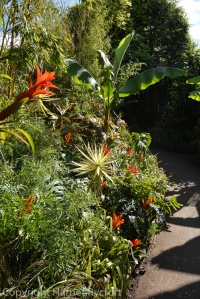
The important thing for me was to find a garden which would be exciting to work in. This is one little corner of the walled garden at CWP.
When I left Whichford I wanted a change and to spend time thinking, writing, visiting gardens and nurseries, and working in my own garden. I soon started teaching online at My Garden School, but I also realised that I was not ready to stop working as a proper hands-on gardener. I considered a variety of new roles, even applied in a slightly half-hearted way for a couple of them, but I just didn’t want a job which was as all-consuming as my previous one, which had leaked into many extra days, weekends and evenings.
I thought hard and made a list of priorities:
- Working two days per week, but being prepared to work three at busy times.
- A garden open to the public. This motivates me much more than working in a private garden.
- Working with a team of gardeners. I was so tired of being the only gardener.
- Exciting use of plants and a wide range of horticultural styles and tasks. I wanted to broaden my experience as much as possible
I made a little list.
I wrote to the garden at the top of the list with my CV and a couple of pictures of my previous work and asked if they could do with a spare gardener. Bingo! What a piece of luck.
So that is why the past year or so has seen me donning a green sweatshirt with a zebra on it and heading off to the Cotswold Wildlife Park and Gardens a couple of times a week. It’s a place I already knew quite well as we had many trips there when our boys were small: a zoo set in 160 acres of parkland and gardens around a Georgian Gothick house near Burford, in the Oxfordshire Cotswolds. There’s plenty of room to picnic and to run about, with a large adventure playground, and a narrow-gauge train called Bella which runs in the summer and in school holidays. Accessibility is excellent for wheelchair users and there’s no excuse for people leaving their dogs in cars as dogs on leads are welcome. It’s open all year round, except for Christmas day – so it’s about as public as you can get.
The animals are a bonus for me. I haven’t got tired of honking good morning at the Humboldt penguins, and I’m working on my spoken meerkat. I still find it hilarious when the otters stand on their stump and shout at anyone wearing Park green. I would rather all wild creatures could be thriving in their natural habitats, but I also think it is more important than ever that people get to see a little of the amazing biodiversity of this planet for themselves rather than on a screen. It’s only by seeing animals and plants at close quarters and falling in love with them that humans will realise that the natural world should be valued and protected.
As wild gene pools shrink I can (sadly) imagine that the captive gene bank will become more important – animals in captivity enable close study and often breeding of rare species, something at which the Park has had a lot of success. The Park doesn’t overstretch itself, it keeps a wide variety of creatures, from leaf-cutter ants to giraffes, but there is plenty of room. The keepers are dedicated and knowledgeable and there is co-operation with conservation schemes in various parts of the world, including Madagascar. If I thought the animals were badly kept you wouldn’t see me for dust.
2015 turned out to be a very special year for the Park, as in March their second white rhino calf was born, Ian, a half-brother to Astrid. Then in August, with the most brilliant timing, John (named after the founder of the Park, John Heyworth) was born during Rhino Week, a full brother to Astrid. The crash of rhinos (yes, apparently that is the collective noun) has been a delight to visitors and staff alike. I treasure memories of little John, only a couple of weeks old, leading his brother, sister and mother in a gallop around the paddock. Weeding and planting in the beds by the haha is often interrupted by the need to watch rhino shenanigans. I always thought that rhinos were rather stolid animals but now I can see that they are very like their horse relatives in the way they interact, move and even smell. And I certainly didn’t know until this year that baby rhinos squeak!
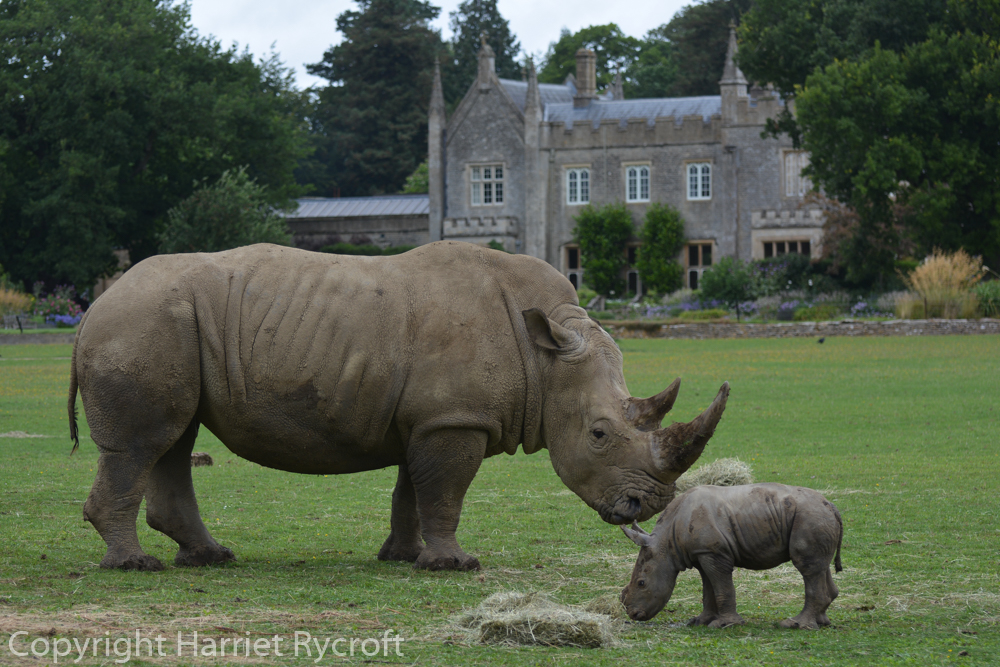
John (one week old) with his dad, Monty. White rhinos are definitely the best animal to have with a Gothick house.
For years now the Park’s gardens have had a growing reputation for interesting plants and planting, with the garden team being led by Tim Miles, the Head Gardener. I remember noticing extravagant-looking plants such as Ipomoea lobata there just as I really began to wake up to the world of gardening. Tim is a certified plant nut and the team is full of talent: floristry, propagation, turf, orchid botany, machine maintenance, ecology, pests and diseases, knitting, pumpkin carving, baking, singing, you name a skill, we have it covered!
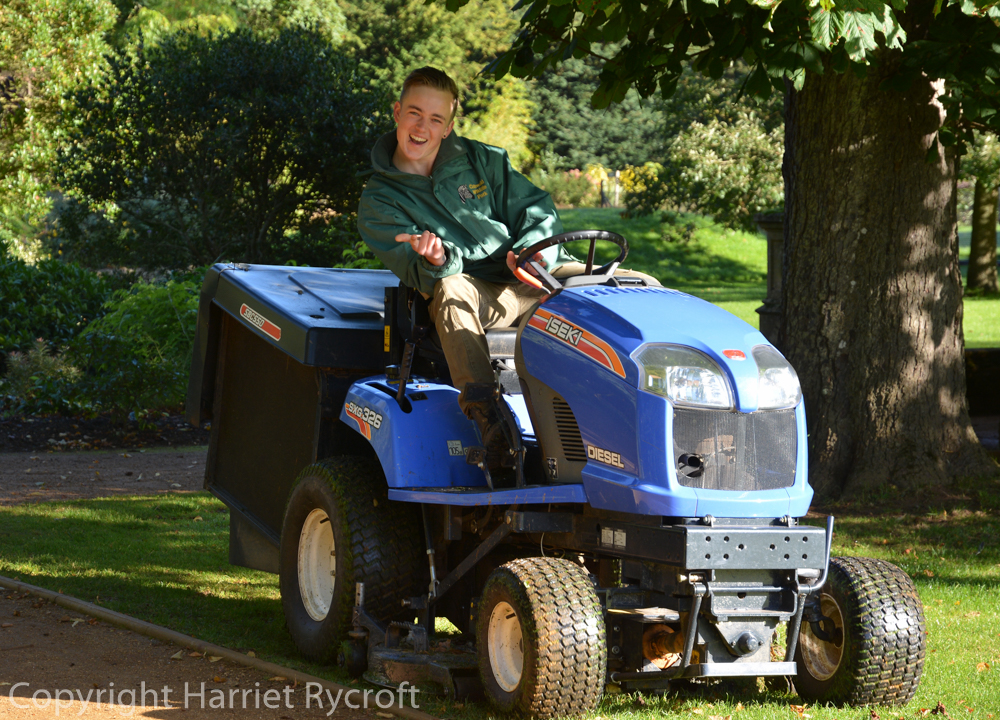
Much of the mowing is done first thing in the morning, before the visitors arrive. OK Jimmy, you can stop posing now.
We use such a wide range of plants: cacti, orchids, bromeliads, traditional bedding plants, exotic bedding, annuals, conifers, ferns, hardy shrubs and trees, grasses, spring bulbs, summer bulbs, wildflowers, hardy perennials, tender perennials, bamboos, water plants, tropical plants, climbers, ericaceous plants, fruit, vegetables… For me it’s a delight to move to this smorgasbord from a relatively limited plant diet but I’ve got an awful lot to learn. I had thought that my plant knowledge was quite good until I came to the Park.
I’ve spent a lot of time in the last year working in the Winter Garden, among Parrotia, Hamamelis, Camellia, Daphne, Sarcococca and a big collection of Helleborus and bulbs – I’ll blog about this separately, so that I can give you more detail. This is a relatively newly-planted area, so we are still adjusting the positioning of some plants and adding new ones – all of which entails a great deal of discussion and quite often ends up with me standing in the border holding a young shrub while Tim and the deputy head-gardener Chris (Christine) say “Left a bit, right a bit..”
We have also put in lots of new plants around the Owl aviaries nearby and I’m looking forward to seeing how they develop in 2016. The first time I weeded there I became dimly aware of a sinister growling noise. It was the male white-faced owl (all 8 inches of him) staring fixedly at me and expressing his displeasure, he’s much more intimidating than the massive vultures who live opposite.
It’s a big site, so you have to learn to think hard about the equipment you need for a job, as it can be a fifteen minute walk back to the tool shed. We often work by ourselves or in pairs, but help is only a radio-call away. After working by myself for so long I was amazed at how much more fun a routine job like mulching a large border is when there’s a gang of you working together.
Disposal of plant material often means bagging the buggy for a trip to the monstrous compost heaps. These happen to be behind the Asiatic lion enclosure, and the lions watch you very closely, very closely indeed. I still find this unsettling.
Some prunings, thinnings and weeds are of course treats for various inhabitants of the Park. It seems that almost everybody eats bamboo. Giant tortoises like a few nettles and lemurs will wreck everything except Leycesteria formosa (pheasant berry). Branches and old wood can be useful for perches, climbing, and exploration or “enrichment”, some twiggy and grassy material is handy for nest-building. So it’s often worth consulting the keepers before you chuck anything out.
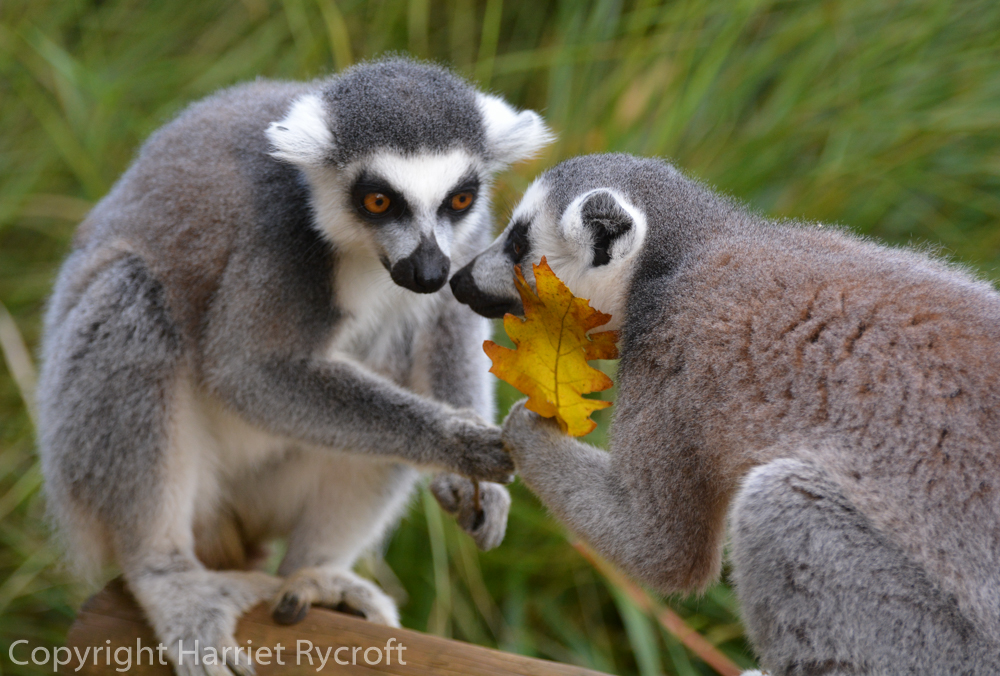
“I think you’ll find that’s MY oak leaf.” Ring-tailed lemurs in the walk-through “Madagascar” enclosure.
Working in the winter is relatively peaceful, many of the visitors are locals, hardy dog-walkers or people with children small enough to enjoy jumping in puddles just as much as watching the Colobus monkeys. There are school groups during term time (you can generally hear those coming as you weed around the hellebores), but the Easter and Summer holidays can see huge numbers of visitors and as you hide at the back of a deep border the sound of chat and children playing is a bit like a busy day at the seaside. At any time of year there are questions. At Whichford my most frequently asked question was “Where are the toilets?” My most frequently asked question at the Park is “Where are the lions?”
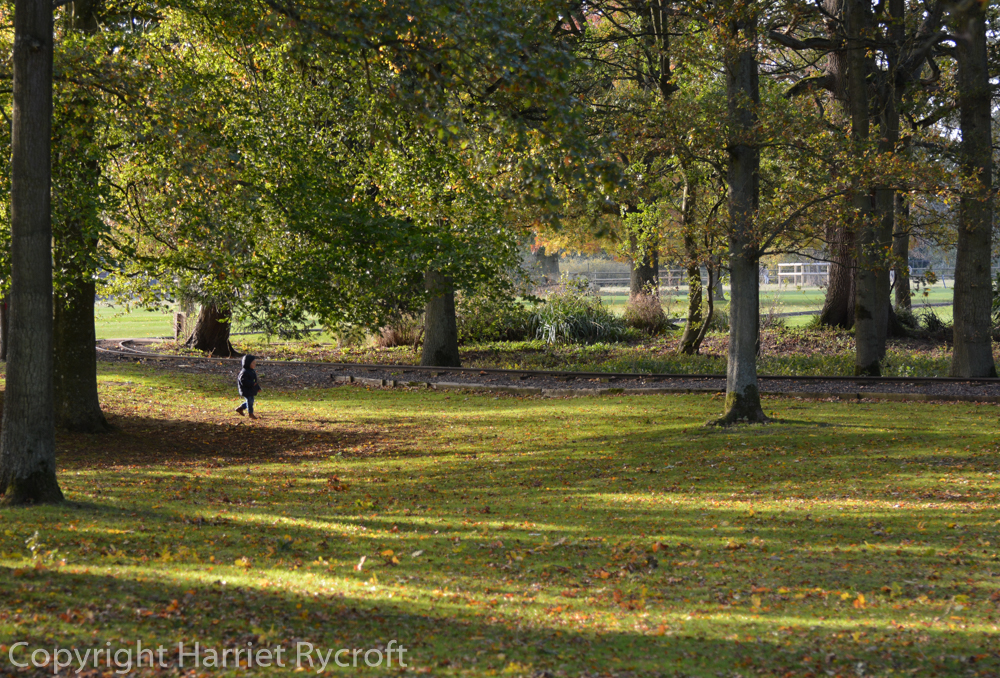
During term-time in the cooler months there’s plenty of leaf-kicking and puddle-jumping for small people
It is, however, really noticeable that a lot of people are very interested in the gardens and we get a lot of plant-identification requests. We often get visitors coming up to us to tell us how marvellous the gardens are at all times of year and (block your ears, keepers) how the gardens would be well worth visiting even without the animals!
There are ten full-time gardeners and two part-timers at the moment, doing everything from mowing the extensive lawns and grassed overflow parking, to cleaning out fountains, maintaining vast mixed borders, propagating plants and creating amazing bedding schemes. The summer/winter bedding-out of plants, especially in the walled garden, and the container planting (barrels, pots, wall baskets, window-boxes, hanging baskets…) deserve posts to themselves but for now this post is just a glimpse of this year’s highlights.



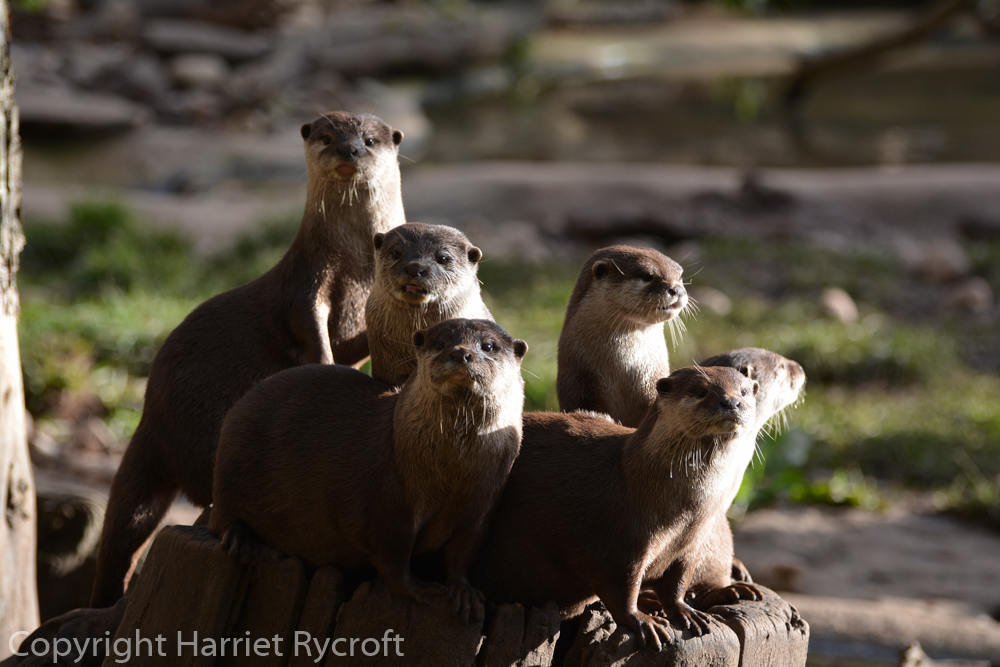




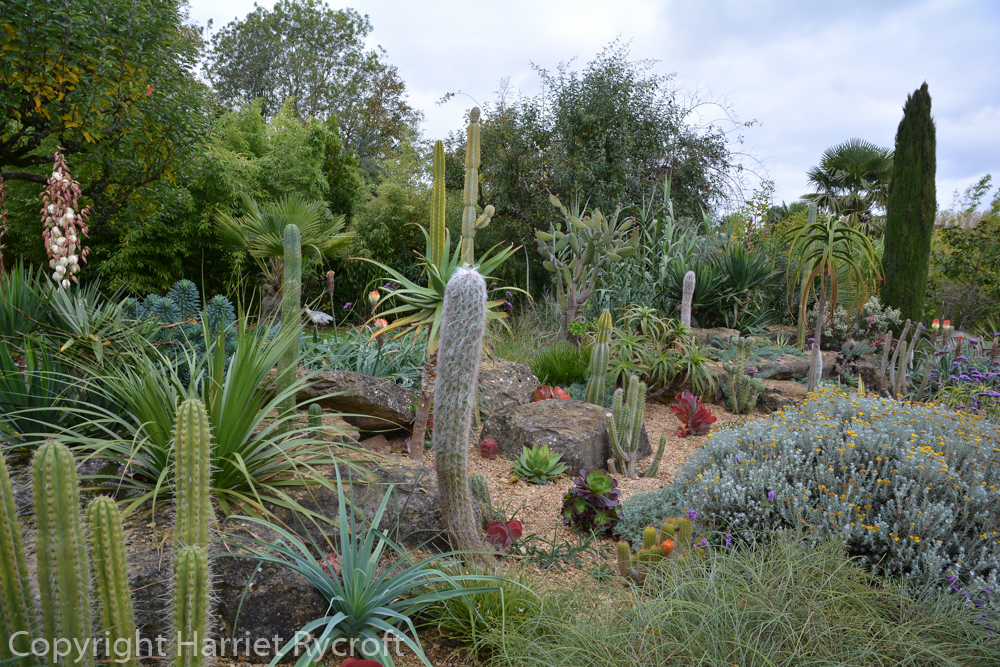

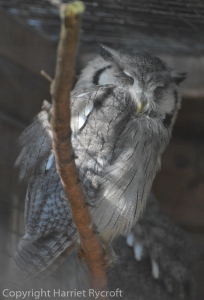


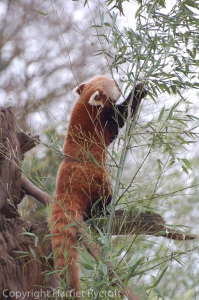
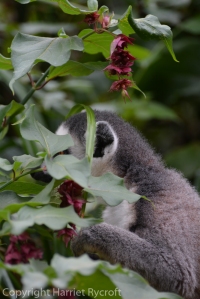
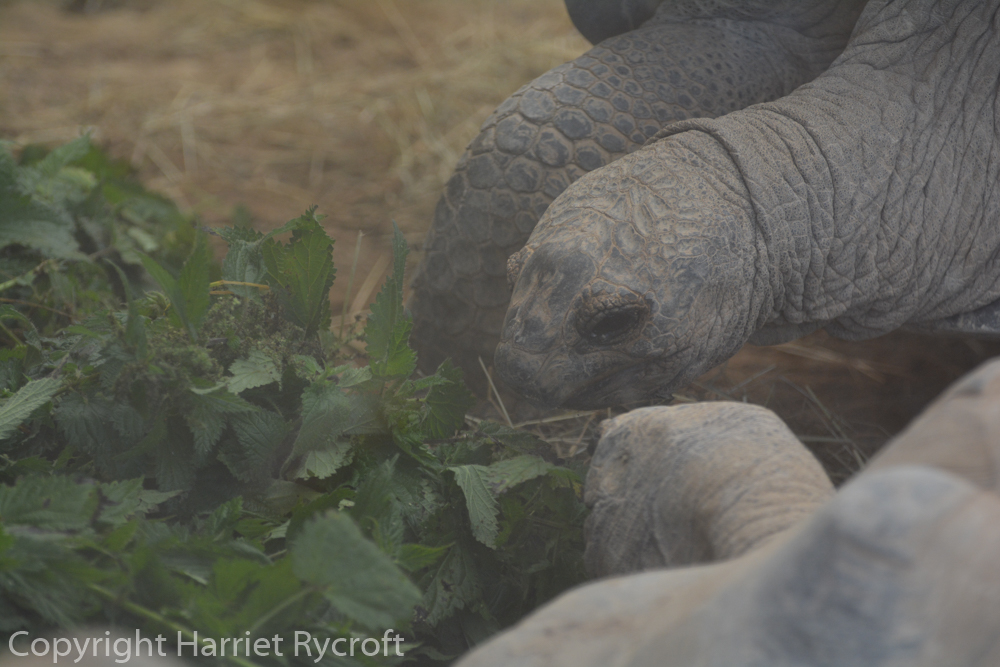
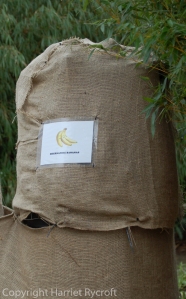

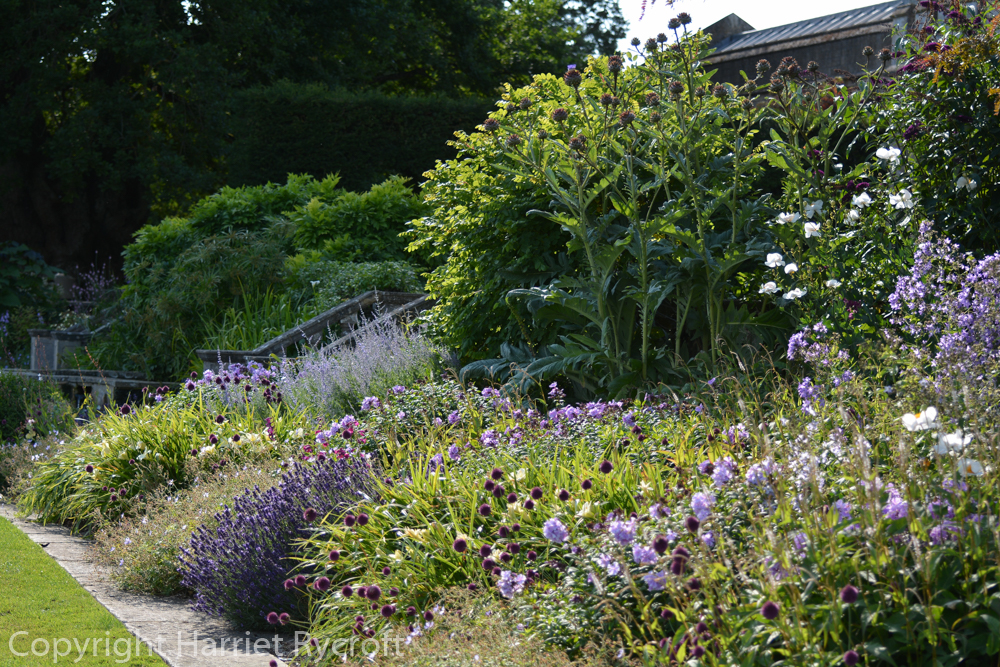
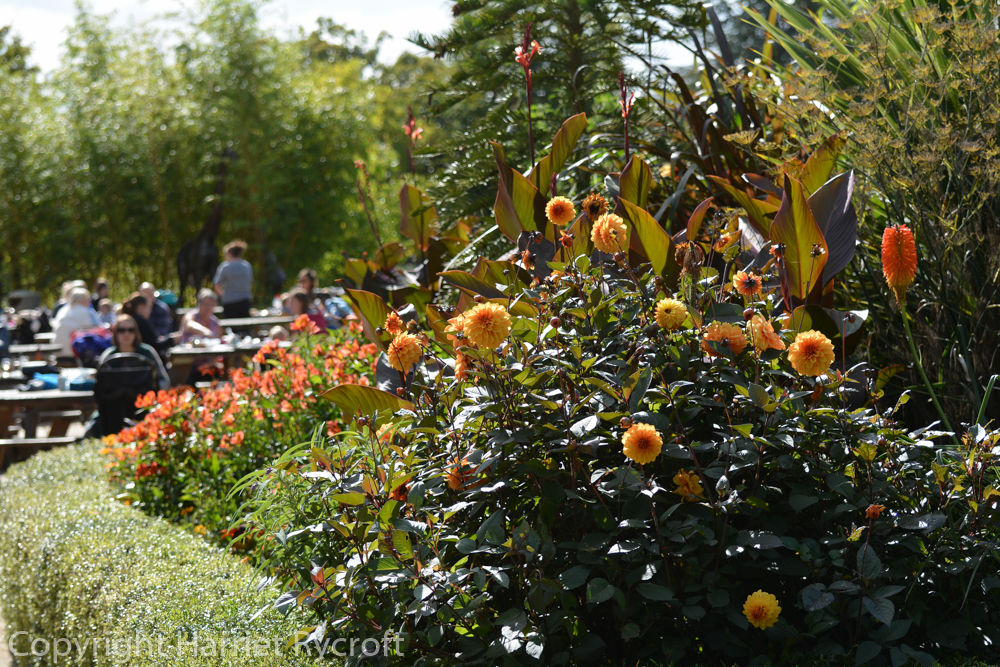


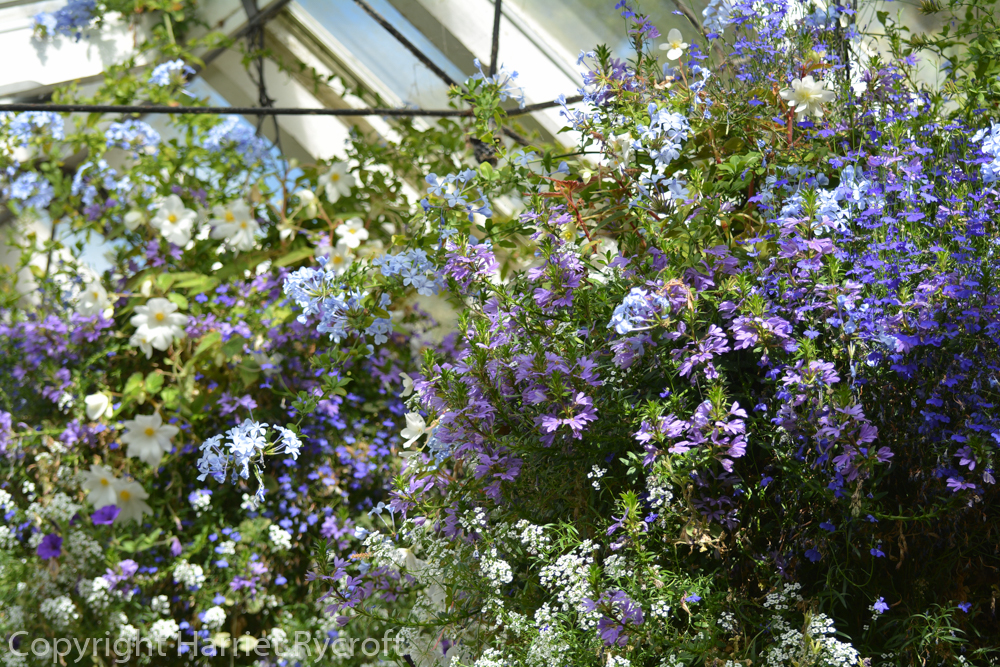

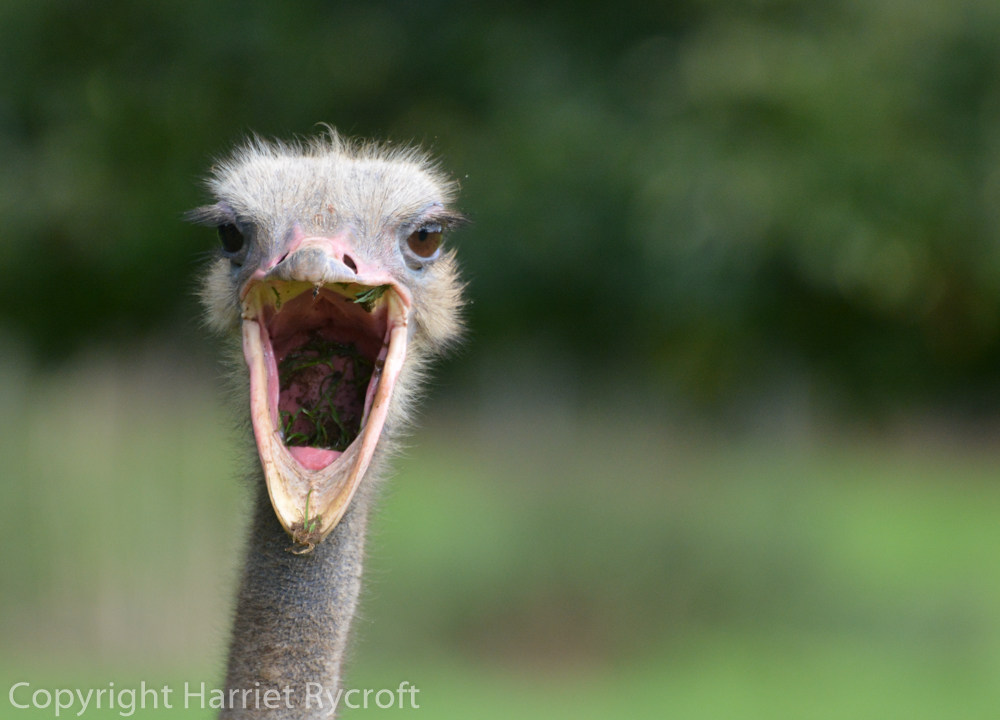

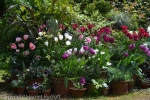
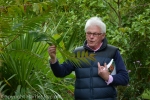
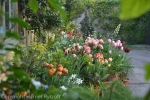
We used to live quite close by and it was one of my favourite places to visit. Glad to see it is still in good hands! Just love that last pic..
LikeLike
It is still owned by the same family, Reggie Heyworth is in charge now. It is great fun – shame I can’t keep my camera with me at all times, photo opportunities missed all the time!
LikeLike
That’s such a lovely over-view of the park. I’m really looking forward to hearing more. I found the little box on the right with the green arrow to “follow.” My favourite photo is the ring tailed lemurs. When we visited, we were allowed to walk through the enclosure. I’ve got some lovely photos of the lemurs closely scrutinising Mum and my daughter. You are right about it being good fun to work as a team. Especially when you are gardening. All the best, Harriet. x
LikeLike
Thank you Karen, yes the “walk through” lemur enclosure is a real treat. I think the park really has something for everyone, I have always been fond of it and like it even more now I have seen behind the scenes. Glad you found the Follow The Parrot button!
LikeLiked by 1 person
Really enjoyed the blog Harriet. I am so impressed by what I could see the garden in your pictures. So often gardens seem to be of secondary importance in wildlife parks but that is obviously not the case here. Looks a really interesting and original place to work in. Certainly lots of chances to learn more and group gardening is always a plus. Please take your camera every day. Happy gardening in 2016.
LikeLike
Thanks very much, Philippa! I wish I could carry my camera all the time but if I’m there I have to get stuck into the gardening. When the days get longer I sometimes stay after work and take a few photos – that’s why there aren’t many wintry photos featured, even though a frosty morning at the Park is staggeringly beautiful.
LikeLike
The gardens look fantastic. Some wonderful pictures, Harriet. You will have to invest in a mobile phone they take some good pictures.Do you or anyone from the gardens give talks to gardening clubs?
LikeLike
Hi Brian, yes I give talks and so does Tim – depends what sort of thing you’re after! I have a mobile but don’t carry it when I’m working, it would be too tempting to mess about with it…
LikeLike
Lovely images. The last one really made me smile. We hope to get up there this year. I’d love to get a Red Panda shot.
LikeLike
Thanks! The red pandas are a bit camera shy, well a bit everything shy really, but they are such a beautiful colour.
LikeLike